New Oak Woodland
BACK TO FULL TOUR
Garden Features
Drought Tolerant
California Natives
Deer Resistant
Lawn-Free Landscaping
Wildlife Habitat
My wife and I built a house on a 2.2-acre grassy field in northwest Petaluma 23 years ago. I started planting trees, mainly native oaks, in the lower field, approximately 1.5 acres, away from the house. I now have about 14 20+-year old Quercus agrifolia and Quercus lobata. In addition, I planted 14 Sequoia sempervirons ( clearly a mistake), two Arbutus menziesii, and a number of non-natives, including some Plantanus acerfolia (Bloodgood London Plane), some Liquidambar styraciflua (Sweetgum), a Quercus coccinea, and some Acer rubrum ( scarlet maple), and others, in the same time frame. Over the years I’ve gradually added more trees, mostly native oaks. More recently I’ve been attempting to create a more diverse habitat in this “oak woodland” and have tried a variety of drought-tolerant native shrubs. Some have done well and others haven’t. I currently have a scattering of about 50 shrubs, most relatively young. I find this to be a hostile environment for new plantings, mainly because any attempt to water new plantings invites vicious attacks by gophers who prevent any roots from growing outside the gopher basket! Other stressors include hotter than usual summers, drier than usual ground, strong winds coming through the Petaluma gap, and nutrient-poor sandy loam soil. I find that the heartiest plants in these circumstances are a variety of manzanitas and ceanothuses.
I initially installed a drip irrigation system but found that it was impossible to continually trouble-shoot such a large system for damage caused by gophers. That system is now decommissioned. I currently hand-water new plantings every one to two weeks in the summer.
A variety of wildlife are utilizing this property, including a bare minimum of 33 species of birds, as well as deer, badgers, racoons, opossums, skunks, foxes, coyotes, gopher snakes, king snakes, one rubber boa, and a few amphibians. I’m constantly trying to attract more!
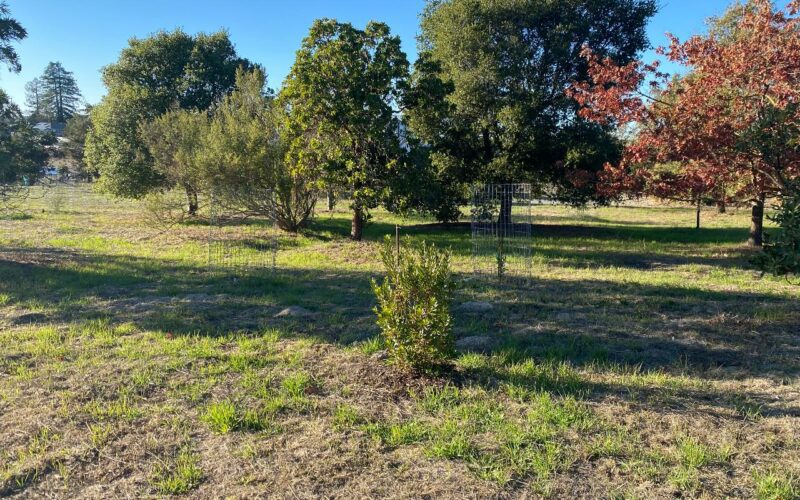
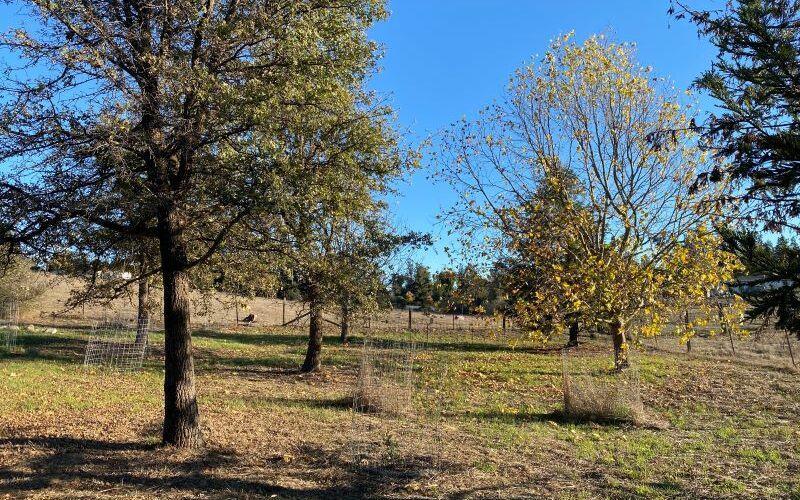



Plants in this Garden
-
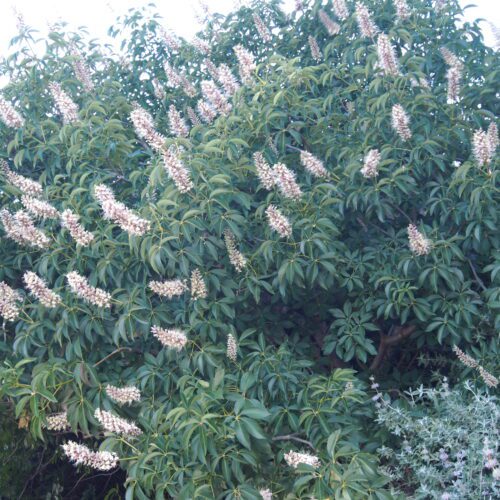
Aesculus californica California Buckeye
-
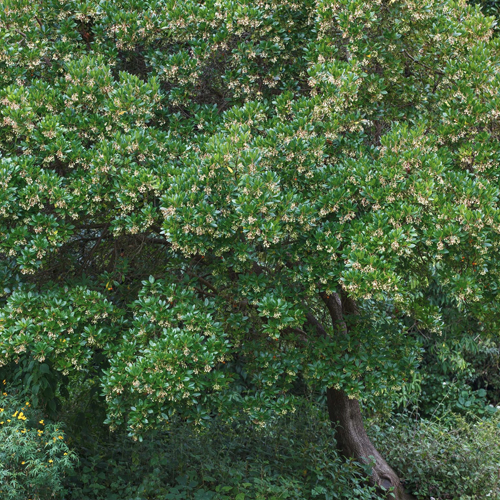
Arbutus spp & hybrids Arbutus, Strawberry Tree
-
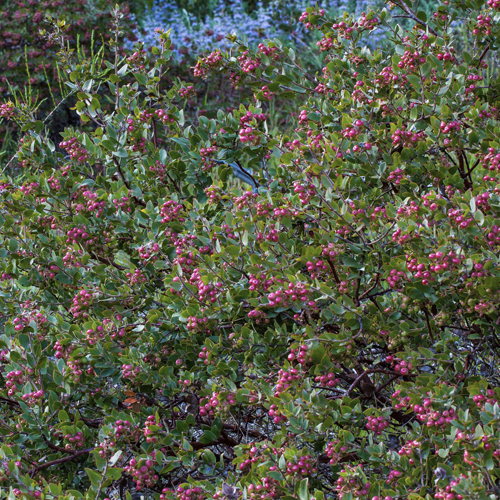
Arctostaphylos spp & cvs Manzanita, 'Dr. Hurd'
-
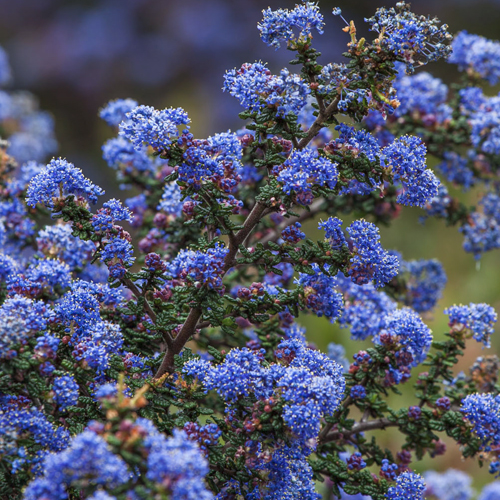
Ceanothus spp & cvs Ceanothus
-
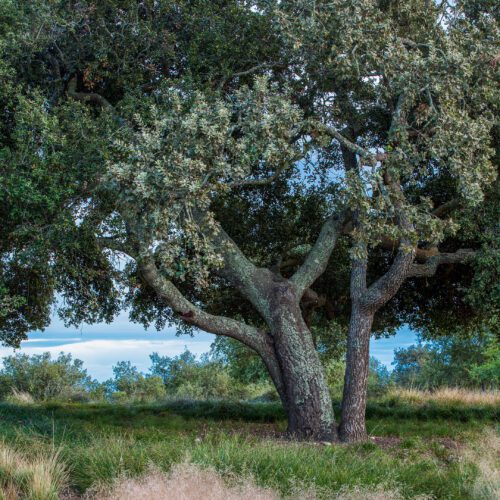
Quercus agrifolia Coast Live Oak
-

Quercus lobata Valley Oak
-
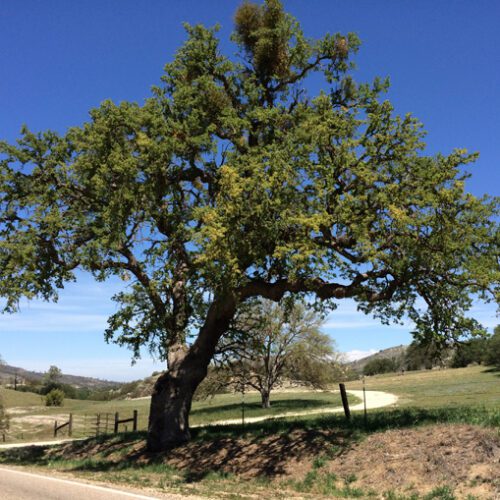
Quercus douglasii Blue Oak
-

Heteromeles arbutifolia Toyon
-
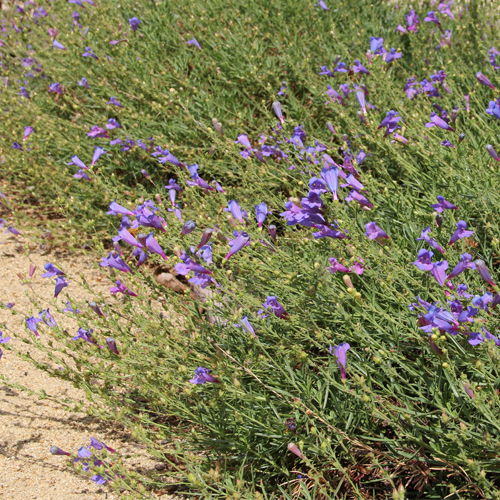
Penstemon heterophyllus Blue Foothill Penstemon, California Penstemon
-
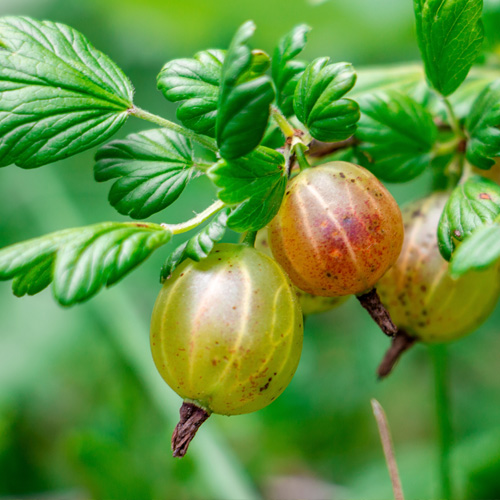
Ribes spp Currant, Gooseberry
-
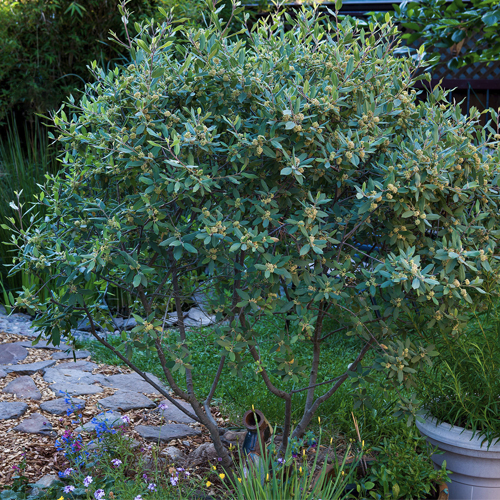
Rhamnus [Frangula] californica Coffeeberry
-

Baccharis pilularis & cvs Dwarf Coyote Bush
-
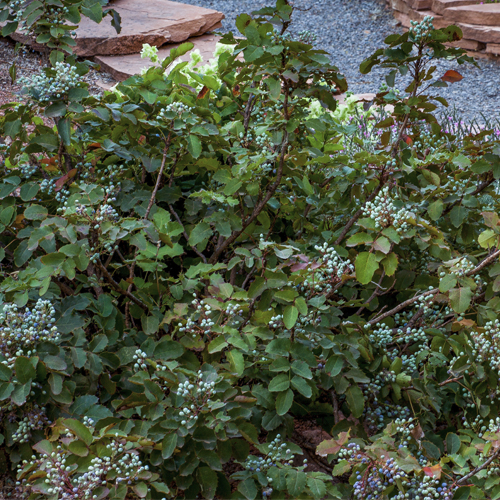
Mahonia [Berberis] spp Oregon Grape, Berberry


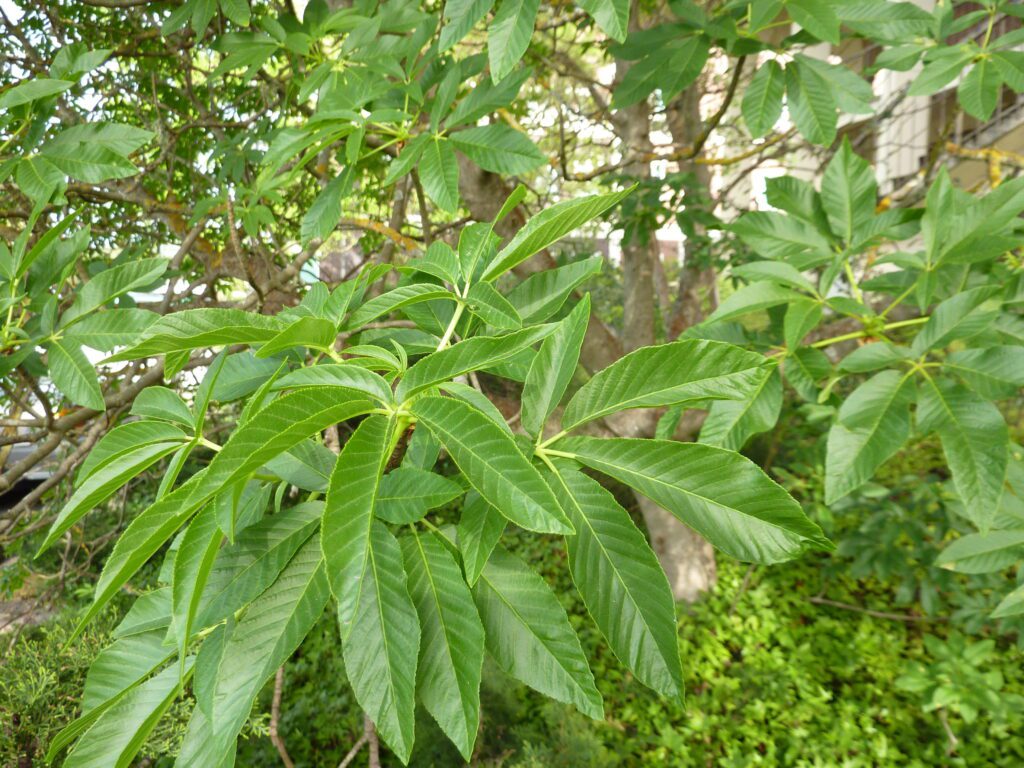
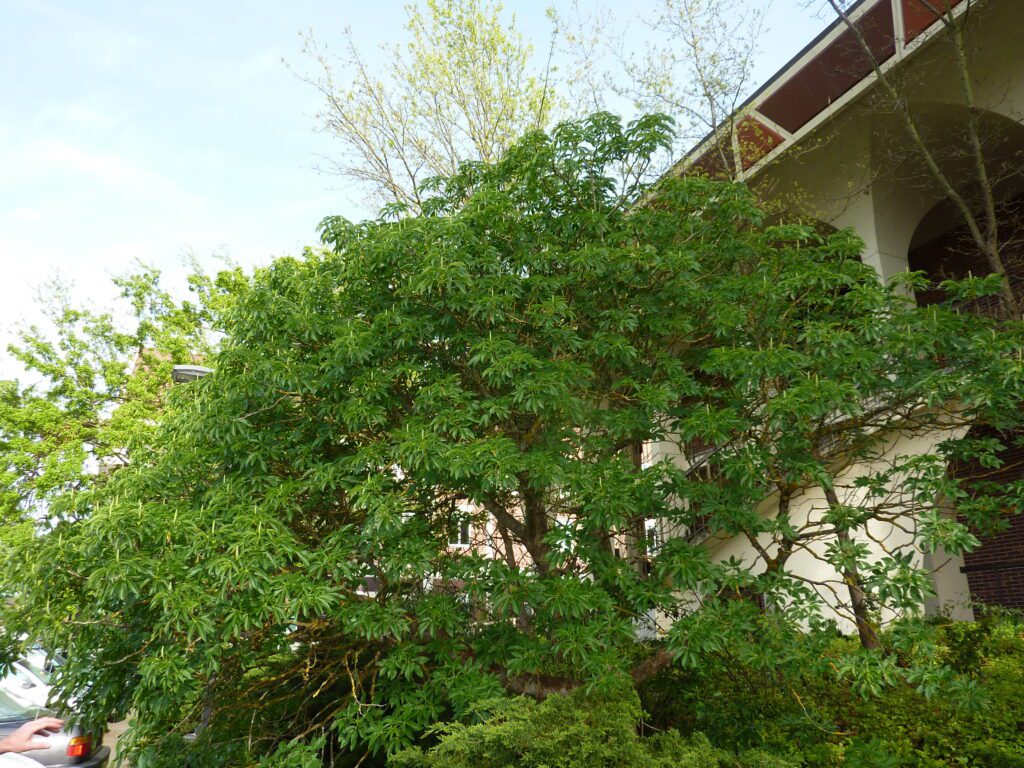
Large, multi-trunked shrub or small tree. Silvery gray bark with green leaves and clusters of fragrant white flowers. Summer deciduous, defoliating in early July and growing during wet winter and spring months. Only buckeye native to California, small trees are found in Southern regions while large shrubs are found in Northern regions.
- Water: Very Low
- Light: Full Sun
- Soil: Well Drained

Group of evergreen trees and large shrubs with attractive foliage and bark, small urn-shaped flowers, and reddish fruit. Prefer sunny locations and well-drained soil. A. ‘Marina’ (20-30’ – 15-30’) and A. unedo (strawberry tree, 15-30’ x 15-30’) are most commonly planted in California landscapes, either as multi-stemmed or single-stemmed, large shrubs or trees. While the two trees are similar in appearance, A. ‘Marina’ has cinnamon-brown shedding bark, whereas the bark of A. unedo is more brown. A. menziesii (madrone, 20-100’) is native to the west coast of North America, including the foothills of Sonoma and Marin counties. A. menziesii is less common in landscapes as it is notoriously difficult to establish.
- Water: Low
- Light: Full SunPartial Shade
- Soil: Well Drained

Manzanitas vary from carpet-forming groundcovers to small trees. Manzanitas have varying shades of striking, reddish brown bark and can provide structure to a garden. These plants have evergreen foliage, small white-to-pink, urn-shaped blossoms in late winter to early spring, and then small fruits that resemble tiny apples.
Groundcovers: A. ‘Emerald Carpet’ (1’ x 3-6’), A. ‘Pacific Mist’ (2-3’ x 6-8’), A. nummularia ‘Bear Belly’ (1’ x 3’), A. uva ursi ‘Radiant’ (6” x 4-6’), A. uva ursi ‘Wood’s Compct’ (1’ x 3’).
Shrubs: A. ‘Howard McMinn’ (5-7’ x 6-10’), A. ‘John Dourly’ (3-4’ x 5-6’), A. ‘Lester Rowntree’ (8-10’ x 10-15’), A. ‘Sunset‘ (5-7’), A. bakeri ‘Louis Edmunds’ (8-10’), A. manzanita ‘Sentinel’ (6-8’ x 5’), A. hookeri ‘Wayside’ (3′ x 8′).
Trees: A. manzanita ‘Dr. Hurd’ (10-15′)
- Water: Very LowLow
- Light: Full SunPartial Shade
- Soil: Well Drained

Ceanothus is a group of fast-growing, evergreen shrubs that vary from groundcovers to small trees, many of which are native to California. They provide a spectacular display of flowers in spring that will attract a multitude of pollinators. Flowers are followed by seeds that provide food for birds. The clusters of tiny flowers range from white to deep violet. Plants perform best with good drainage and minimal irrigation once established. Some do best in cooler coastal climates, but many thrive in hotter inland climates. Pay close attention to the mature size when selecting ceanothus to ensure that it has sufficient space for its natural form.
Groundcovers: C. ‘Centennial’ (1’ x 8’), C. gloriosus var. gloriosus ‘Anchor Bay’ (2’ x 8’), C. griseus var. horizontalis ‘Diamond Heights’ (variegated, 1’ x 4’), C. griseus var. horizontalis ‘Yankee Point’ (3’ x 12’), C. maritimus (2’ x 6’).
Shrubs: C. ‘Blue Jeans’ (6’ x 6’), C. Concha (6’ x 6’), C. ‘Dark Star’ (6’ x 8’), C. ‘Joyce Coulter’ (4’ x 12’), C. ‘Julia Phelps’ (8’ x 10’), C. cuneatus (8’ x 8’), C. thyrsiflorus ‘Skylark’ (4’ x 6’).
Large shrubs: C. ‘Frosty Blue’ (10’ x 12’), C. thyrsiflorus (20’ x 20’), C. t. ‘Snow Flurry’ (white flower, 20’ x 20’).
Trees: C. ‘Ray Hartman’ (15′ x 15′)
- Water: Very LowLow
- Light: Full SunPartial Shade
- Soil: Well Drained
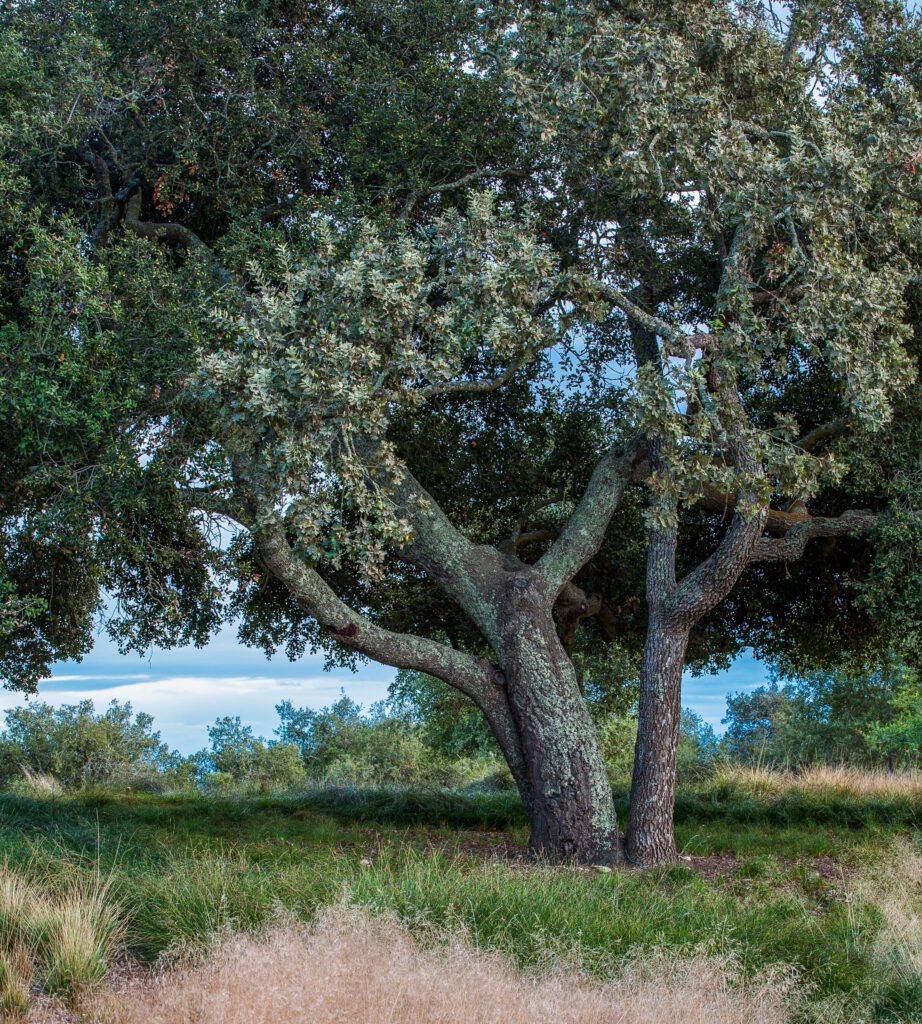
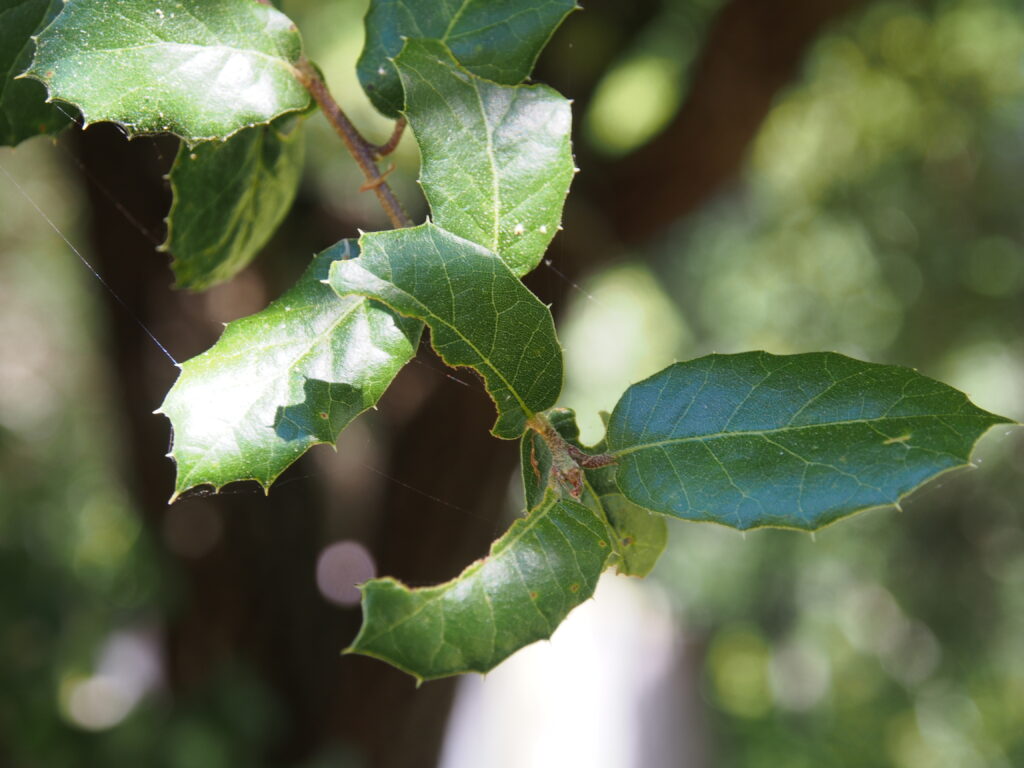
Woody perennial, evergreen tree. Large, dense and broadly rounded with green, spiny margin leaves. Native along coast and coastal mountains from Northern California. One of the best local natives for large properties. Susceptible to Sudden Oak Death.
- Water: Very Low
- Light: Full Sun
- Soil: Well Drained
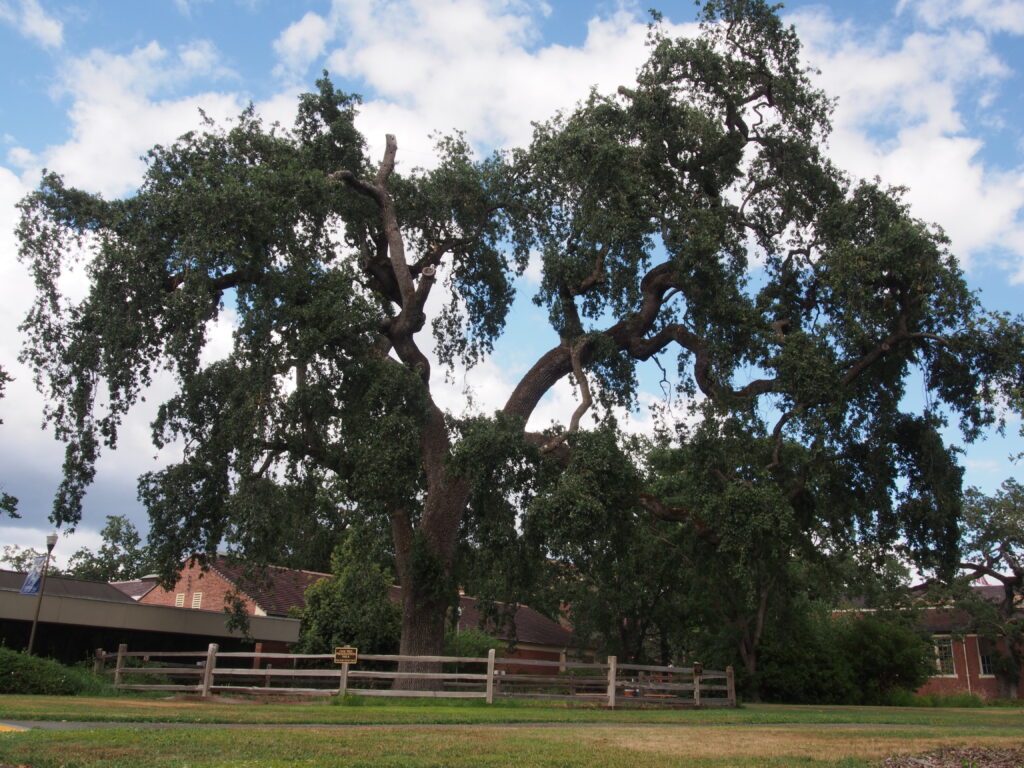
Woody perennial, deciduous tree. Fast growing and one of the best local natives for large properties. Dark green leaves and dark brown to pale gray, ridged bark. Not susceptible to Sudden Oak Death.
- Water: Low
- Light: Full Sun
- Soil: Well Drained
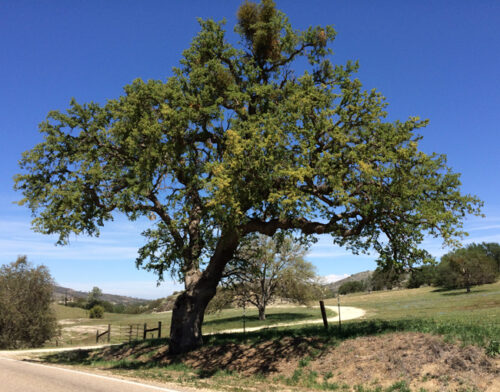
Woody perennial, deciduous tree. Slow growing local native with blue tinted foliage. Native to dry, rocky slopes in foothills. Not susceptible to Sudden Oak Death.
- Water: Very Low
- Light: Full SunPartial Shade
- Soil: Well Drained

California native, evergreen shrub or small tree often seen growing in Sonoma and Marin county wildlands. Lacy, white flower clusters in spring attract pollinators; red berries in winter provide a splash of color and an important food source for birds. The name “Hollywood” was born from the abundance of toyon in the hills of southern California and its resemblance to European holly. The cultivar ‘Davis Gold’ has yellow berries and may be more disease-resistant than the species.
- Water: Low
- Light: Full SunPartial Shade
- Soil: Well Drained

Penstemons are a large group of woody or herbaceous perennials with narrow leaves and tubular flowers. Foothill penstemon is a widely known and grown California native with iridescent purple-blue flowers during spring and early summer that are attractive to hummingbirds. The cultivar known as ‘Margarita BOP’ is widely available, reliable, and garden- tolerant. Remove spent flower spikes to encourage more flowers.
- Water: Low
- Light: Full SunPartial Shade
- Soil: Well Drained

Currants (without spines) and gooseberries (with spines) are grown for their graceful growth habit, attractive foliage, wonderful displays of pendulous flowers in winter-spring that are attractive to hummingbirds, and colorful fruit that provides a food source for birds. Most of the species listed are deciduous, going dormant in the summer months.
Examples: Some of the species suitable for California gardens, preferably with partial shade, are native to the Western United States:
- aurem, golden currant (5-10’ x 3-6’), deciduous with small clusters of delicate yellow flowers and sprawling habit.
- malvaceum, chaparral currant (4-8’ x 4-6’), deciduous with early clusters of pink flowers, a slightly vase-shaped habit, and more drought-tolerant than most species.
- sanguineum var. glutinosum, pink-flowering currant (5-12’ x 5-12’), deciduous with maple-like leaves, a vase-shaped habit, and long pendulous clusters of pink, reddish, or white flowers in the spring; many available cultivars such as ‘Claremont’, ‘Tranquillon Ridge’, and ‘White Icicle’.
- speciosum, fuchsia-flowered gooseberry (4-8’ x 6-10’), deciduous with spiny, arching stems and bright red fuchsia-like flowers along the stems in the spring that are attractive to hummingbirds.
- viburnifolium, evergreen currant or Catalina perfume (2-4’ x 5-7’), evergreen groundcover that works well under oaks and can provide erosion control to slopes.
- Water: Very LowLow
- Light: Full SunPartial ShadeShade
- Soil: Well Drained

Evergreen shrub that has insignificant flowers followed by black berries. Flowers are attractive to pollinators, especially bees, and berries provide a food source for birds. Cultivars commonly sold in nurseries have differing growth habits and are often smaller than the species which grows 5-18’ x 10-18’.
Examples: F. c. ‘Eve Case’ (6-8’ x 6-8’), R. c. ‘Leatherleaf’ (5-6’ x 5-6’), R. c. ‘Mound San Bruno’ (6-8’ x 6-8’) with a dense, mounding growth habit.
Note: California coffeeberry was formerly classified as Rhamnus californica and is now classified as Frangula californica.
- Water: Low
- Light: Full SunPartial Shade
- Soil: Most Soils
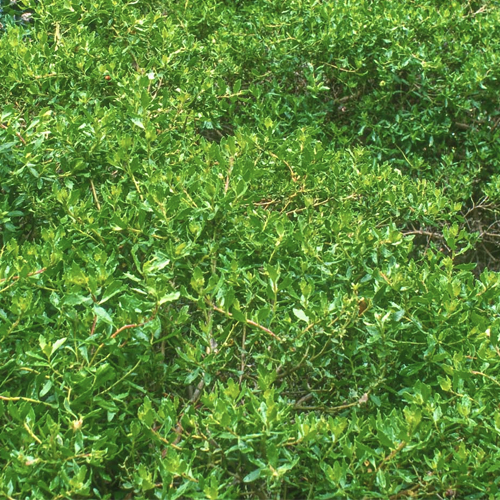
Flowers are inconspicuous but provide a source of pollen, nectar, and seeds for wildlife. Shrubby varieties can be cut back to maintain a more tidy and compact appearance. Perennial varieties can be divided in fall or early spring. Excellent choice as support for more showy plants in the garden.
- Water: Low
- Light: Full Sun
- Soil: Most Soils

Some barberries may be referred to either as Berberis or Mahonia. The California species are a group of evergreen shrubs with glossy, spiny-edged leaves and clusters of yellow flowers in spring followed by small grape-like berries attractive to birds. Barberry foliage provides a display through the year as new leaf growth is often bronzy red that gives way to green- and finally purple-red tones in the winter months.
Examples: Oregon grape (M. repens, 1-3’ x 2-3’) is an excellent small-scale groundcover for lightly shaded understory locations; Nevin mahonia (M. nevinii, 6-8’ x 6-8’) with blue-green leaves from Southern California is a good screen plant; and California holly grape (M. pinnata, 4-6’ x 4-6’) with wavy leaves provides distinctive texture.
- Water: Low
- Light: Full Sun
- Soil: Well Drained